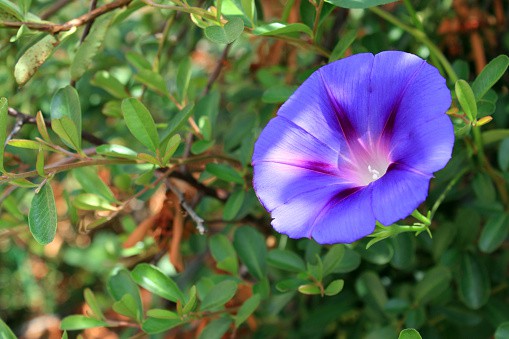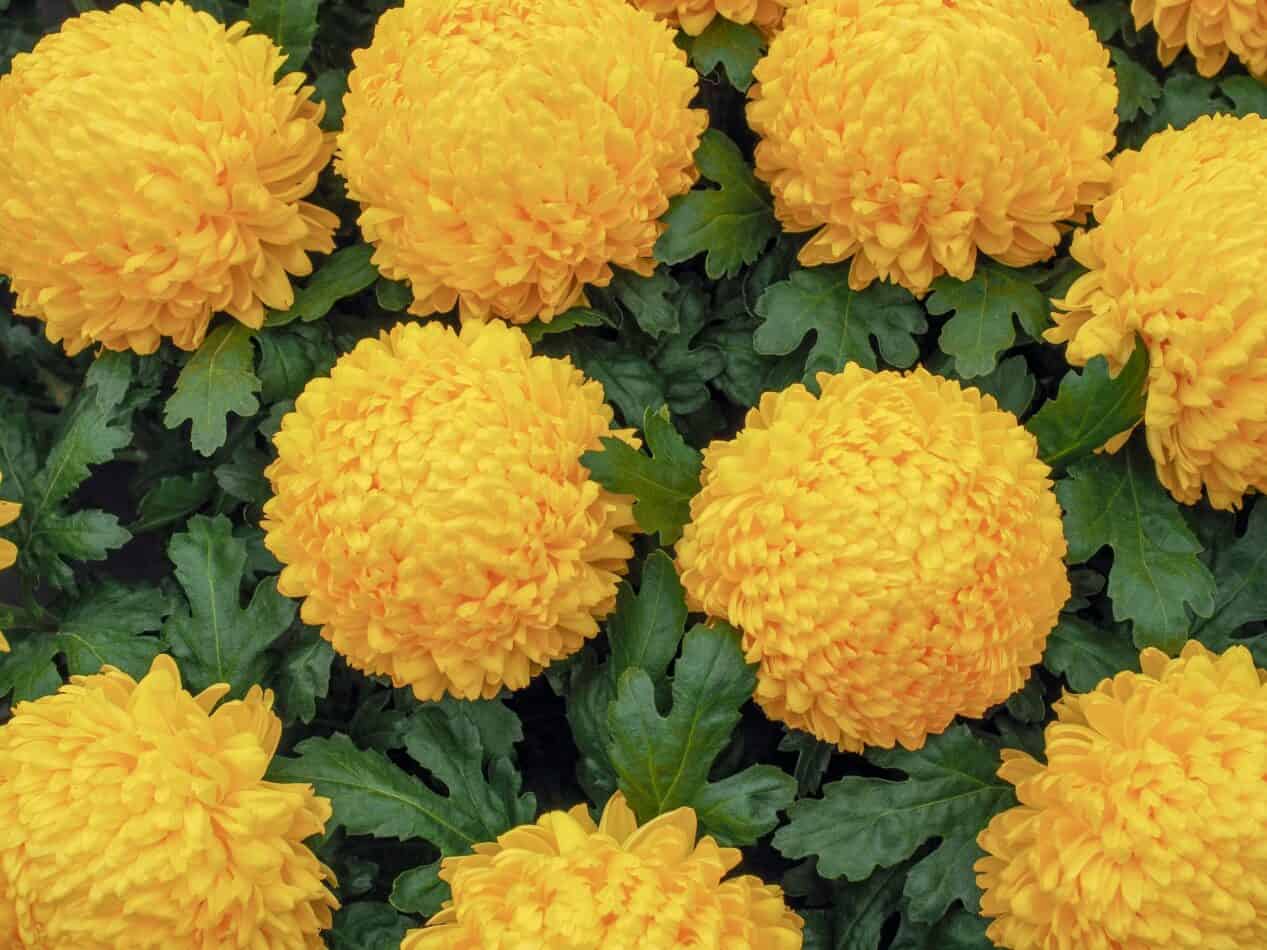The Morning Glory, scientifically known as Ipomoea purpurea, is a robust and resilient climbing annual that is prized for its stunning trumpet-shaped blooms. Its colors range from deep purple to a more vibrant blue, and its inner throats are a creamy white color. When the morning light hits these flowers, its beauty is apparent, giving this plant its name. Growing up to ten feet tall in a season, the Morning Glory is a fast climber, perfect for adding a touch of greenery to fences and trellises that appear too plain.
The Morning Glory is a sight to behold, with its bright colors drawing in hummingbirds and butterflies. From the Latin family BALSAMINACEAE, its genus name, Ipomoea, comes from the Greek word ipos, meaning “worm” due to its long twining stems, and purpurea, which is derived from the purple color of the flower. The old common name, “Wild Balsam” also alludes to its family name.
How to Plant
The Morning Glory is an easily manageable plant which will require minimal maintenance. To get your plant started, prepare a sunny spot in your garden for planting and make sure you have ideal soil for it. The soil should be light and rich, but well draining. If the soil has a tendency to be overly wet, you should amend it with sand. This flower requires sun at least 6-8 hours a day in order to produce its vibrant blooms. Plant in the early spring and fertilize at least once a month until the end of summer. Make sure you water your Morning Glory consistently. It will need about 1-inch of water every week, but don’t let it sit in soggy soil for too long.
Meaning and Symbolism
The Morning Glory is popularly known as a symbol of love and affection. Its bright colors and ability to bloom overnight are seen as a symbol of transformation and new beginnings. In Christian myth, the Morning Glory is believed to symbolize eternity and immortality. For many cultures, it is a sign of positive vibes and a reminder to stay positive.
History, Mythology, and Religious Significance
Morning Glories have been around for centuries, but these vibrant and fast-growing plants have been molded and adapted by many different cultures. The Aztecs used Morning Glory in their religious ceremonies to seek visions and connect with the gods. It is also said that the Greek goddess of love, Aphrodite, created the Morning Glory. To the Christian community, the Morning Glory was not only a symbol of eternity and faith, but also of resurrection.
Flower Varieties and their Defining Characteristics
The Morning Glory belongs to the Ipomoea genus and its family name is the Convolvulaceae, making it a part of the bindweed family. There are a variety of different Morning Glory varieties, each with unique characteristics. Common varieties include I. purpurea, I. frutescens, I. caerulea, and I. Aquatica. They are all annuals, except for I. Frutescens, which is a perennial.
I. purpurea has a deep violet to blue color and is a self-twining annual. It is also a creeper, making it perfect for adding color to an otherwise plain trellis or fence. I. Frutescens, on the other hand, is a perennial and its colors range from white and purple to a shiny deep blue. It is sometimes used as an ornamental plant in flower beds and containers due to its beautiful blooms.
I. Caerulea, also known as the blue morning glory, is characterized by its vibrant blue hue. It is not a self-twining plant, making it better suited for hanging pots or containers than fences or walls. It is typically used as an ornamental plant or border in gardens or yards. Lastly, I. Aquatica is an aquatic variety of the Morning Glory. It has deep green leaves and white to purple flowers and requires a moist environment to grow well.
How to Pot and Repot
Pots and containers can be a great way to keep the Morning Glory if you do not have a wide space to work with. Choose a pot or container that is deep and wide enough to allow the Morning Glory to spread its roots. Make sure it has drainage holes on the bottom and fill it with a well-draining soil such as potting soil, enriched with compost. Plant your Morning Glory, water it consistently and it should be ready to thrive within a few weeks.
When it comes to repotting, select a bigger pot and fill it with new soil or amended soil. Before you begin repotting, add some compost to the new soil as this will help the roots spread better. Gently remove the Morning Glory from its old pot or container and transfer it to the new one. Water it thoroughly and place it in an area with plenty of sun.
How to Prune
Pruning is an important part of keeping your Morning Glory healthy and productive. Pruning helps to shape the plant and encourage more blooms. Pruning should be done in the early winter before the flower’s blooming season. Begin by removing any dead, discolored, or wilted leaves and stems from the Morning Glory. This will help the plant focus more of its energy to producing new growth. Once the dead leaves and stems have been removed, cut about one third of the older stems and branches close to the soil level. This will allow new growth to shoot up in abundance.
How to Propagate
Propagation is very easy to achieve with Morning Glory plants. The easiest way is through seed. Collect the seeds that have dropped off the plant and store them in a cool, dry place until you are ready to plant them. Plant in well-drained soil, and lightly water it. You can also start the seeds indoors, but make sure to choose pliable recent plant species rather than older specimens. Once the seeds have germinated, transplant in a warm, well drained soil. You can also propagate the Morning Glory through cuttings. Cut a 4-5 inch stem from the mother plant and remove the leaves from the bottom two thirds. Place the stem cutting in potting soil and water regularly until it takes root.
Common Pests and Diseases
The Morning Glory is vulnerable to some common pests, such as aphids and spider mites. Aphids are small green or brown insects that feed on plant sap. They can cause distorted growth, leaf yellowing, and stunted bloom production. Spider mites are tiny arachnids that create webs on the leaves of the Morning Glory and suck out the sap. To prevent and remove pests, spray with an insecticidal soap.
The Morning Glory is also prone to some common plant diseases, such as powdery mildew and root rot. Powdery mildew occurs when the humidity is high and can cause the leaves to develop a gray-white powdery coating. To prevent it, make sure to provide plenty of airflow and avoid overcrowding your plants. Root rot is caused by too much water and can cause the roots to rot, resulting in stunted growth. Make sure to provide enough drainage and avoid letting the pot stand in stagnant water.
Frequently Asked Questions
Q: What are the growing requirements of the Morning Glory?
A: The Morning Glory is a sun-loving plant and will need at least 6-8 hours of sun exposure a day. It prefers light, well-draining soil with a consistent moisture level and it should be fertilized at least once a month until the end of summer.
Q: How long does the Morning Glory bloom?
A: The Morning Glory blooms from spring to early fall. It usually blooms every morning and closes in the evening.
Q: Does the Morning Glory attract insects and animals?
A: Yes, the Morning Glory attracts hummingbirds and butterflies with its bright colors and sweet, nectar-filled flowers.
Fact Sheet
| Name | Morning Glory – Ipomoea purpurea |
| Family | Convolvulaceae |
| Plant Type | Annual |
| Mature Size | Up to 10 feet tall |
| Sun Exposure | Full Sun |
| Soil Type | Well-drained, light and rich |
| Soil pH | Neutral |
| Bloom Time | Spring to early fall |
| Flower Color | Purple to blue |
| Hardiness Zones | 9-11 |
| Native Area | South America |
What we love from Amazon this week
Buy these wonderful flowers directly from Amazon:















